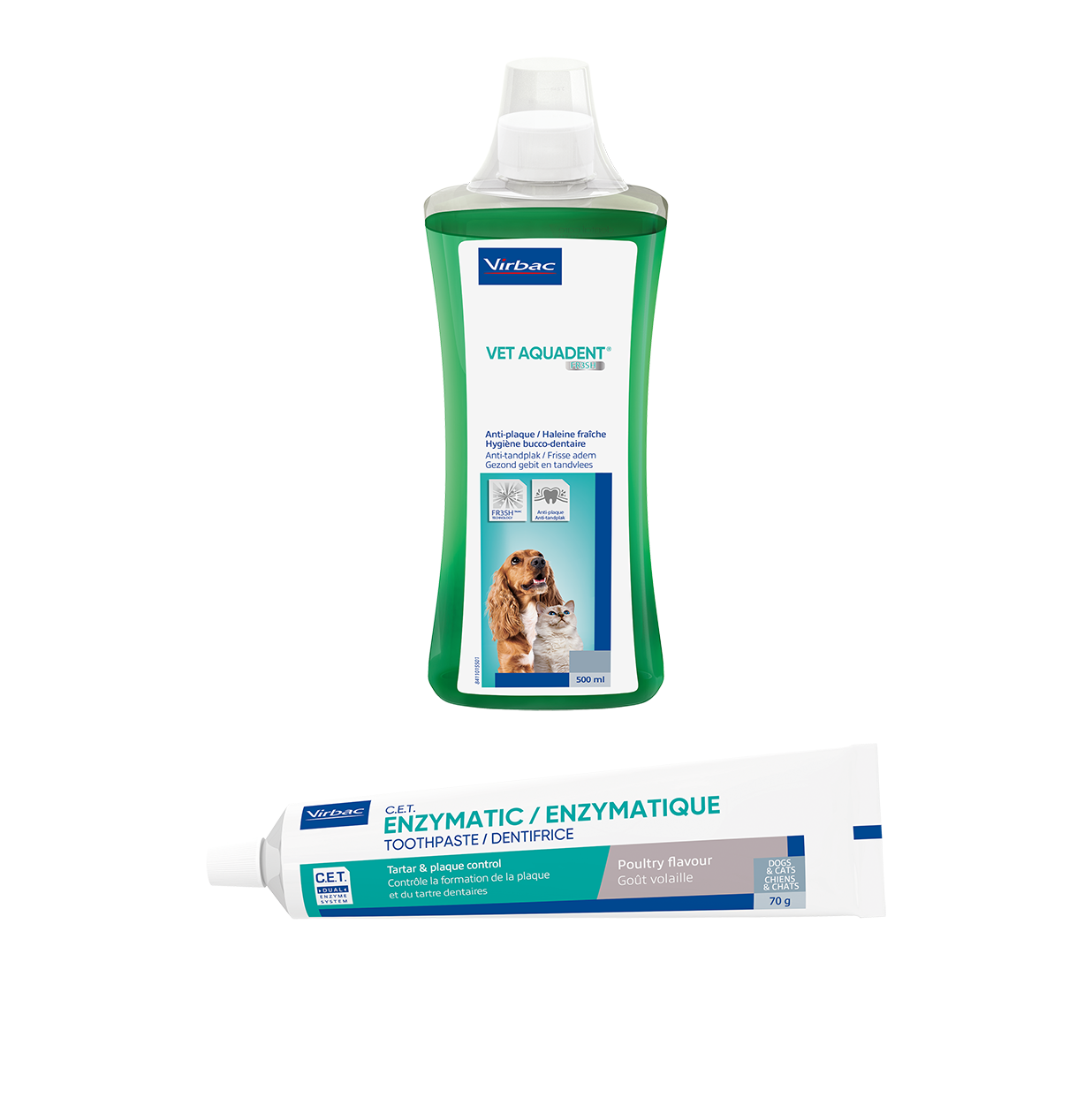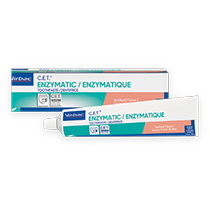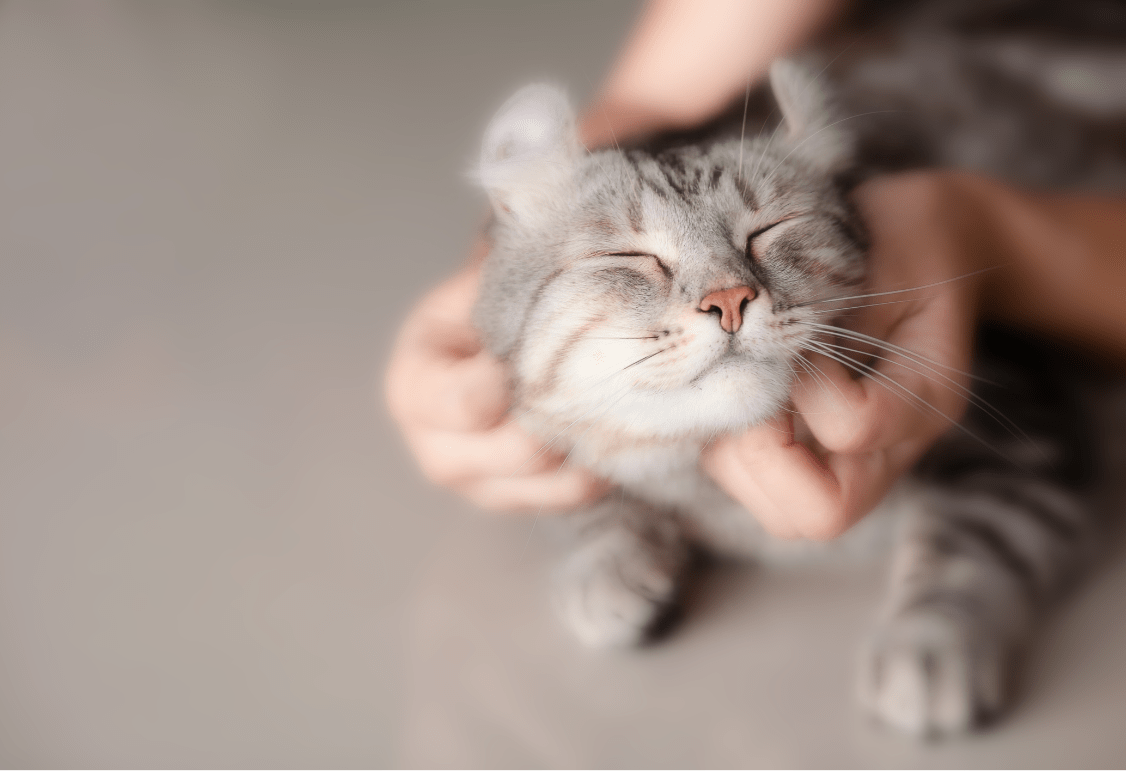Cat dental health
Fresh attitude
At Virbac, we believe that better dental care is essential to your cat's overall health and wellness.
It’s why we’re on a mission to clean every tooth.
Cat dental health
At Virbac, we believe that better dental care is essential to your cat's overall health and wellness.
It’s why we’re on a mission to clean every tooth.
‘Periodontal disease’ is a collective term for several inflammatory conditions in the mouth. It is surprisingly common in dogs and cats with studies showing that more than 70% of cats and 80% of dogs over three years old* are suffering from some form of it. Periodontal disease is caused by a build-up of plaque and tartar on the teeth and gums. The most common conditions are:
Gingivitis – this is caused by plaque bacteria which colonise the space between the teeth and the gum, causing inflammation. It is generally reversible with treatment
Periodontitis – if left untreated, gingivitis can develop into this more serious condition which can cause irreversible damage.
Periodontal disease starts when plaque and bacteria accumulate on the teeth of dogs and cats. Over time, if they are not removed, disease-causing bacteria start to attach themselves to the plaque. This causes inflammation that in time, results in gingivitis. Meanwhile, some of the plaque calicifies into a substance called calculus or tartar – which is usually a light brown colour. This sticks to the teeth and can even cover the whole tooth, allowing more bacteria to lodge on its porous surface, together with food debris. Bad breath can be caused by volatile sulphurs released by the bacteria.
As the gums become inflamed, the gap between the tooth and the gum margin becomes deeper. This just adds to the problem as yet more bacteria find their way in and the problem worsens. At this stage, gingivitis is usually painful but reversible with treatment to remove the plaque and calculus. If it’s not treated, it can transform itself into the more serious condition of periodontitis. Not all dogs and cats develop this condition but, for those that do, it can only be resolved by veterinary treatment as they may develop abscesses, lose teeth or suffer from other oral problems.
For further information on how you can keep your pet’s mouth healthy, contact your vet or vet nurse.
* American Veterinary Dental Association research
Kittens are born with 26 milk teeth which are replaced by 30 by the time they are an adult cat. Cats are true carnivores so their teeth are highly evolved to help them to hunt, kill and eat prey. They are also an aid to self-defence and a tool for grooming. The tiny incisors at the front of their mouths are designed to grip prey while the sharp canine teeth (the fangs!) kill it and shred it. Further back, they have eight sharp and serrated pre-molar teeth to cut food up into chunks that they can swallow whole and four molars to crush bone. Cats can only move their jaws up and down so they can’t chew food in the way that we can.
Research shows that ‘periodontal disease’ – a collective term for several inflammatory conditions in the mouth – occurs in 70% of cats by the time they are three years old*. You may not even be aware that anything is wrong because the symptoms can be hard to detect but, as well as causing painful damage inside a cat’s mouth, if left untreated, the bacteria involved can go on to affect other parts of their body. This means looking after your cat’s mouth should be an important part of your preventative health regime. Fortunately, there are some simple steps you can take to help maintain your cat’s oral health and in so doing, save them from potentially great discomfort and pain. To find out more, ask your vet or vet nurse (or this could be visit a website if it’s for a practice).
* American Veterinary Dental Association research
1. Make your pet comfortable in a usual place and let him get used to you touching his/her mouth
2. Let him/her taste the paste on your finger
3. Introduce the finger brush or toothbrush, gently lifting the lips
4. Put the toothpaste on the finger brush or toothbrush and let him/her lick a bit of the toothpaste
5. Gently pass the finger brush or toothbrush with the paste on the teeth and gums and brush
6. Reward your pet
Learn more on the risks and causes of a pet's bad breath.
Tips on how to train your pet's on dental care and overall health benefits.
At Virbac, we believe that better dental care is essential to your pet’s overall health and wellness.
It’s why we’re on a mission to clean every tooth.

Dual-Enzyme System toothpaste helps prevent the build-up of dental plaque and tartar.
A dental solution which helps maintain fresh breath and supports healthy teeth and gums by controlling plaque in dogs.
We take all the necessary time to make sure we met the high standards of quality in terms of product safety, efficacy and manufacturing process reliability.
We care for the planet. We strive to bring products of natural origin to the market.
Everything we do is guided by research and studies, based on scientific knowledge and approved by experts.
We always work on hassle-free solutions, easy to handle and administer to your furry friend.




